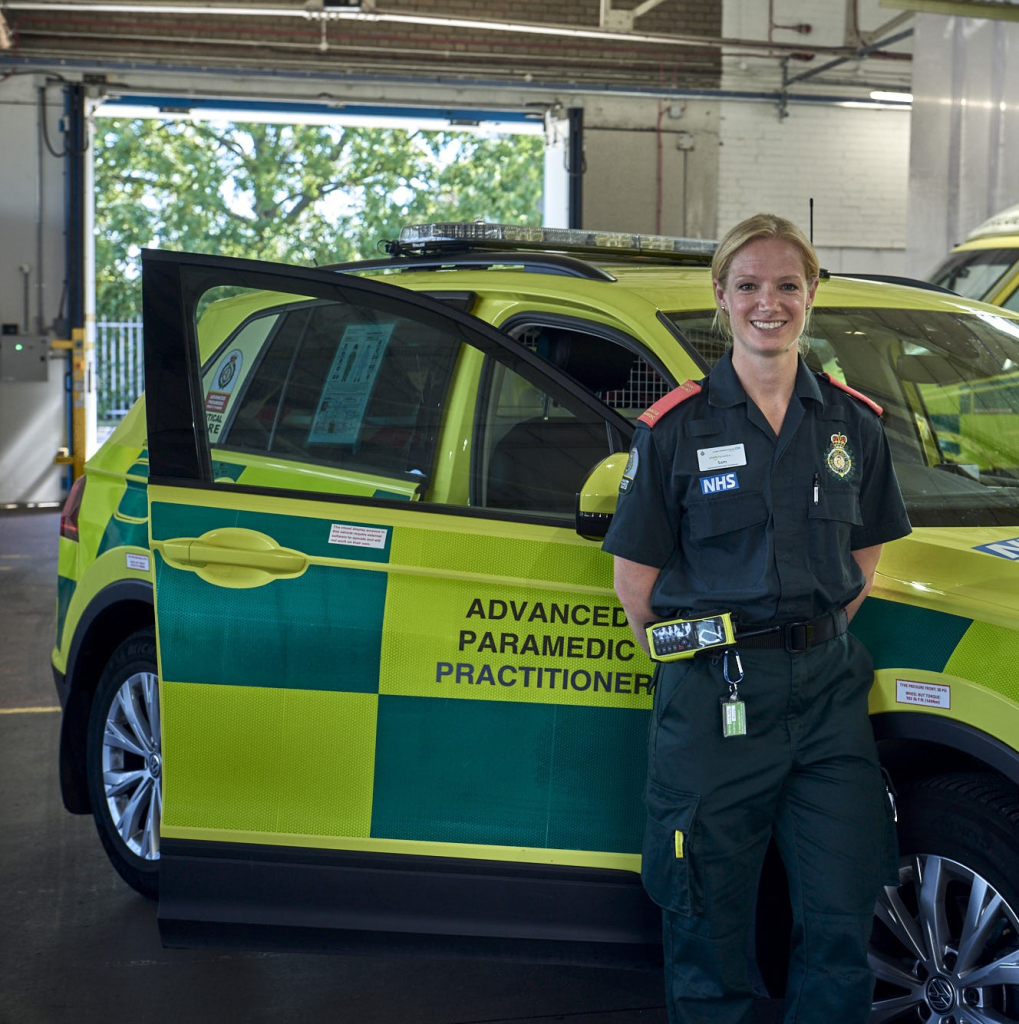Ten years of saving lives: advanced paramedics pushing boundaries to care for the capital
Advanced paramedics at London Ambulance Service are celebrating their 10th anniversary – a decade in which the specialist team has given patients life-saving treatment and care that otherwise would only be attempted in hospital by doctors.

These highly skilled and highly qualified paramedics are sent to patients with the most life-threatening illnesses or injuries across the capital.
And it is now 10 years since the first ever patient was cared for by an Advanced Paramedic Practitioner in Critical Care, a pioneering clinical role created role in London.
Advanced Paramedic Samantha Margetts said:
“We are pushing the boundaries for what paramedics can do on the roadside or in people’s homes, including surgical procedures and realigning broken bones.
“We carry specialist equipment and medicine which is in addition to those carried by ambulance crews and can be life-changing for our patients.”
Advanced paramedics work alone in fast response cars and are most commonly sent to patients in cardiac arrest to support ambulance crews support ambulance crews care for the sickest patients bringing their additional skills and experience.
They are also called to patients with traumatic injuries – those who have been in traffic accidents, victims of assault or significant sports injuries.
TV viewers got the chance to see the amazing care these paramedics provide in the latest series of “Emergency” which can be streamed on Channel 4.
Cameras followed the advanced paramedics, minute-by-minute as they made crucial decisions for their critically ill patients whose lives were in their hands.
When the team was first set up in 2014, there were 12 advanced paramedics. There are now 40, with three clinical supervisors and a clinical development manager.
As well as responding to patients night and day, one advanced paramedic is always on duty in the London Ambulance Service control room listening to 999 calls.
From the control room, they decide which patients might need the life-saving care of a critical care paramedic. They can also provide advice to crews on the road.
Samantha added:
“We have the opportunity to make a real difference to a lot of patients and their families, and a lot of crews. But we could not do our job without all the ambulance crews on scene – we are a team.”
All advanced paramedics hold a master’s degree and the team is renowned around the world for its ground-breaking ambition. London Ambulance Service regularly hosts visits from trusts across the country seeking to learn from the team’s development.
After the success of the critical care paramedics, London Ambulance Service introduced Advanced Paramedic Practitioners in Urgent Care. They aim to treat patients at home for less serious injuries and illnesses; chronic and complex conditions; or patients who are frail, elderly or nearing the end of their life.
Anyone interested in a career with London Ambulance Service can find current vacancies here.
Case study
Last year staff at Heathrow Airport called London Ambulance Service when a 42-year-old woman collapsed with a blood clot in her lungs after a long haul flight.
She went into cardiac arrest, which means her heart had stopped beating, and her chances of surviving were slim. The advanced paramedic on scene was able to scan her, confirm the clot and inserted a tube into her throat to give her a clot-busting drug. Within minutes she was breathing.
Without an advanced paramedic on scene the patient would have been rushed to hospital but it could have taken up to an hour before she would have been given the medicine she needed to survive.

Follow us on social media: